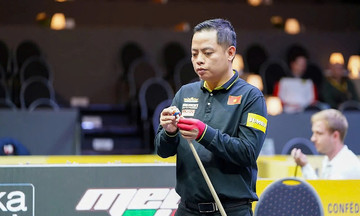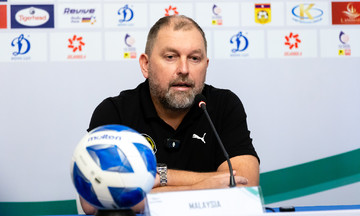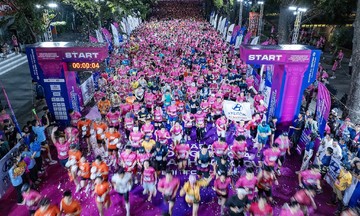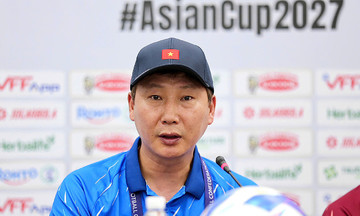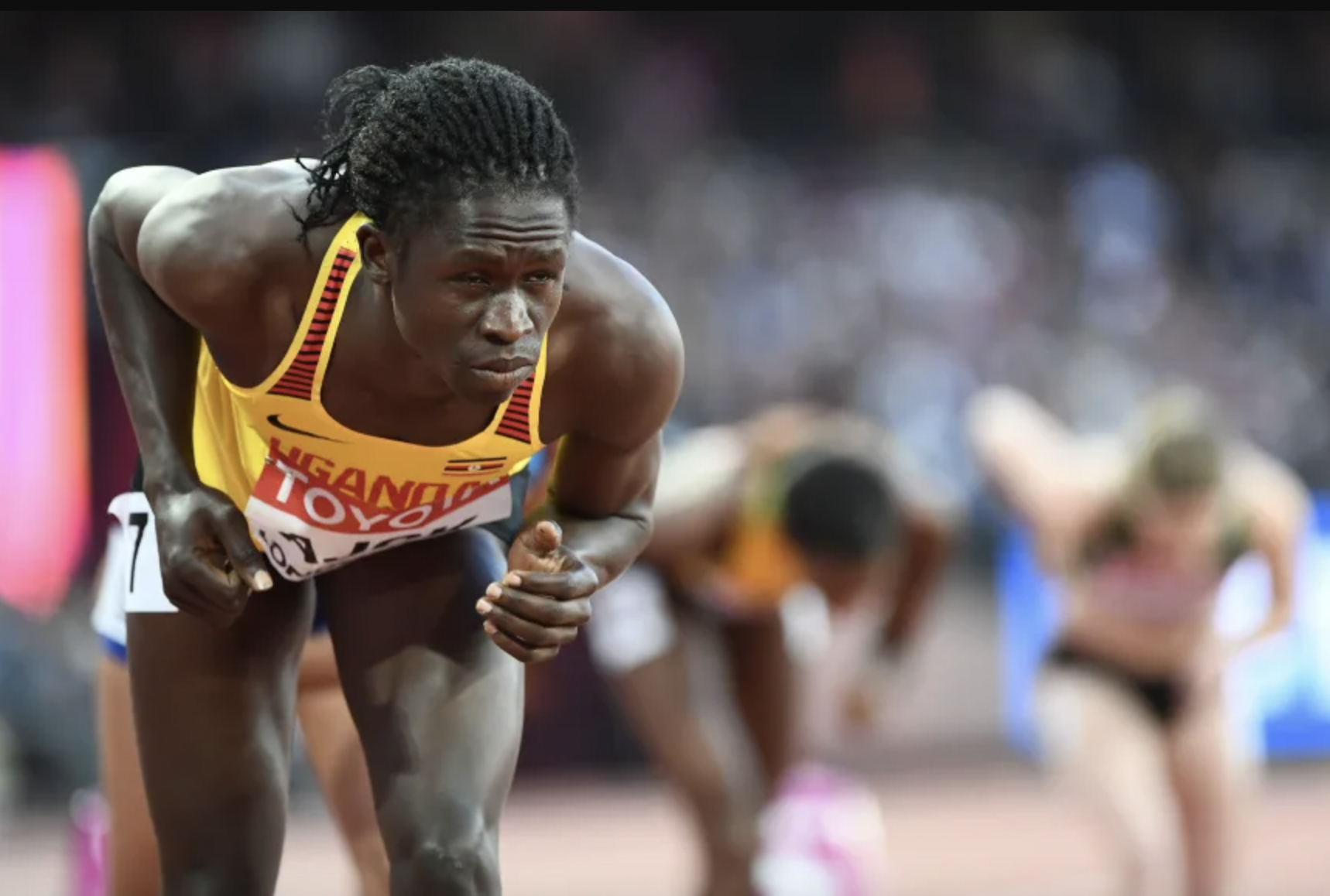 |
Uganda's Docus Ajok competes in the women's 800m at the 2017 World Athletics Championships in London, England. Photo: AFP |
Uganda's Docus Ajok competes in the women's 800m at the 2017 World Athletics Championships in London, England. Photo: AFP
Ugandan middle-distance runner Docus Ajok once dreamed of becoming an Olympic champion. She began competing professionally in 2014 in the 800m and 1500m, proudly representing her nation at the Commonwealth Games, the World Athletics Championships, and the World University Games.
In 2019, World Athletics (WA) instructed the Ugandan Athletics Federation to conduct testosterone testing on Ajok. This marked the end of the 1994-born runner's career. She received a notification banning her from competing in her two main events but never received the test results.
"They set out regulations and rules, suggesting medical interventions," Ajok said. "I used to support my family with all living expenses and still had money for myself. Now, we have nothing and are struggling."
Ajok’s story mirrors that of Kenyan sprinter Maximila Imali. Imali showed great potential in the 800m, making her debut at the World Junior Athletics Championships.
However, everything came to a halt in 2014 when Athletics Kenya requested she undergo blood tests and a medical examination at the behest of the IAAF, the former name of WA. A few months later, Imali's manager informed her she was banned from competing due to high testosterone levels, accompanied by a letter from the IAAF explaining the regulations.
"That’s how my career ended. No one fought for me. My country abandoned me like that," Imali said. "I became history, no longer bringing glory to my people."
Like Ajok, Imali can no longer support herself or her family, including her son. Athletics, once her everything, is now gone.
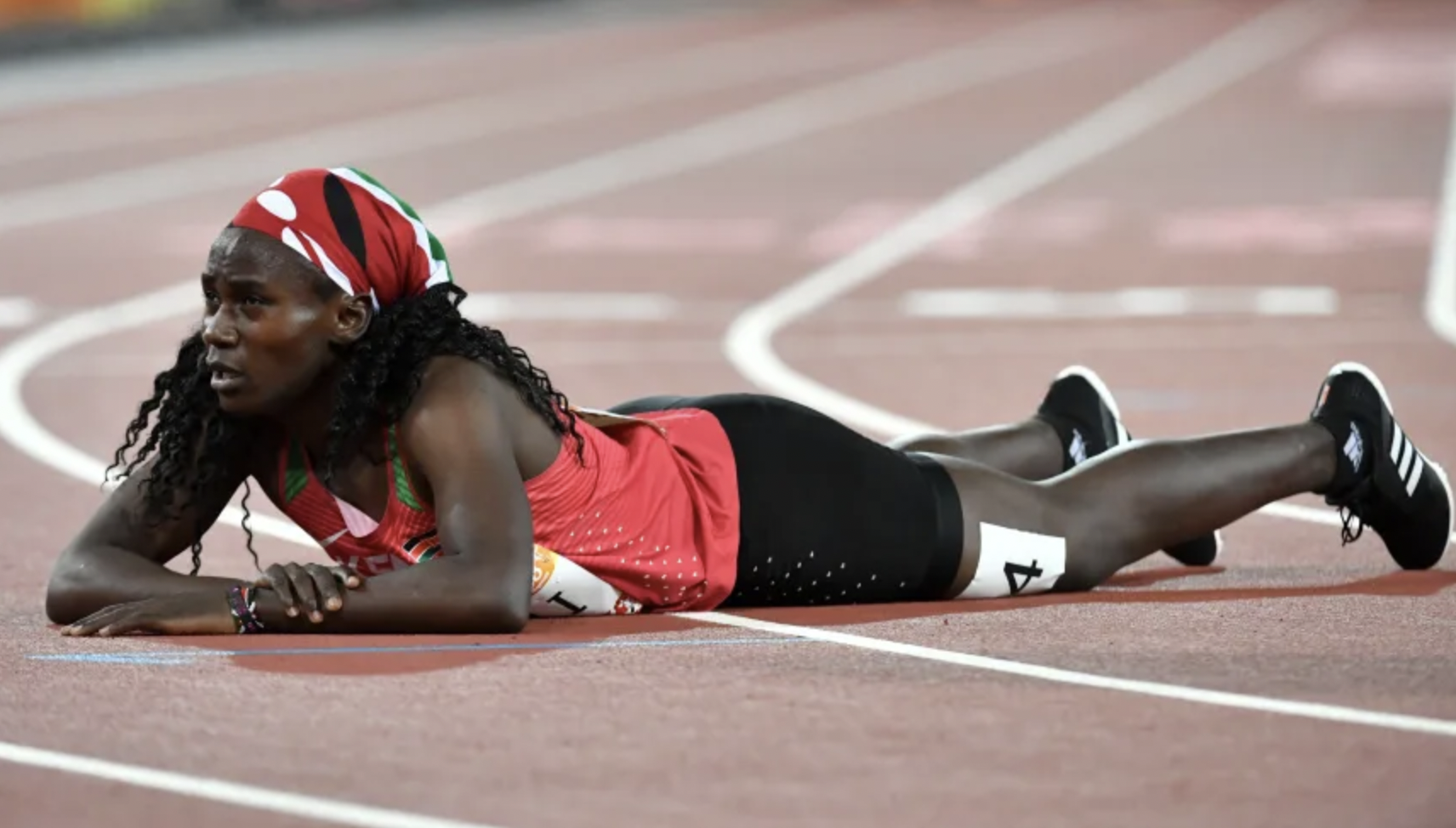 |
Kenyan athlete Imali shows her disappointment after the women's 400m final at the 2018 Commonwealth Games in Australia. Photo: AFP |
Kenyan athlete Imali shows her disappointment after the women's 400m final at the 2018 Commonwealth Games in Australia. Photo: AFP
Officials gave both athletes the option of medical or surgical intervention. Ajok was promised a return to middle-distance running or a transition to longer distances. But a teammate told her about the devastating effects she experienced after medication and surgery.
"She couldn’t run like before, her body started aching, and she couldn’t sleep at night," Ajok said. "Sometimes she would sweat all night. It was a sign of disorder, her body no longer functioning normally."
In a statement, WA asserted it has never required athletes with differences of sex development (DSD) to undergo surgery or medical intervention to compete in the female category. WA claims its procedures are fully documented, based on independent referral centers specializing in each athlete’s specific condition, and provided to the athlete and their representatives for follow-up or any decisions the athlete chooses.
Ajok believes her friend, a renowned athlete, was mistreated, discriminated against, and abandoned, ultimately moving to Europe. This influenced Ajok's decision to forgo intervention.
"I shouldn't have to change my body because the change they wanted me to make wasn't good for my health," Ajok said. "If they want us to live, they can’t force us to take medication. They've seen the suffering of those who have."
Maximila Imali shared Ajok’s sentiment, wanting to remain herself. The former Kenyan athlete questioned why she should undergo intervention when authorities insisted she wasn't ill. "I chose not to do anything because I know I was born a woman," Imali said. "I was raised as a woman. This so-called science can’t decide for me."
A turbulent history of sex testing
As women's participation in professional sports increased, so did scrutiny of their bodies, influenced by evolving concepts of femininity.
In the 1960s, sex testing emerged to restrict some female athletes from competing, based on accusations without clear evidence of male identity.
The first systematic sex testing occurred at the 1966 European Athletics Championships in Hungary. Female athletes underwent visual inspections of their genitals and secondary sex characteristics to identify men disguised as women. These examinations were sometimes referred to as "nude parades," deemed dehumanizing and humiliating by athletes and experts.
At the 1968 Mexico City Olympics, the International Olympic Committee (IOC) introduced the Barr body test, touted as "simpler, more objective, and dignified." This test analyzed cheek swabs to identify X chromosomes, determining an athlete's chromosomal makeup. "At that time, it was believed that XY was exclusively for males and XX for females," said former IOC Medical Commission chair Arne Ljungqvist.
 |
Sex testing of female athletes remains a complex and unresolved issue in global sports. Photo: CNN |
Sex testing of female athletes remains a complex and unresolved issue in global sports. Photo: CNN
This method persisted until the 2000 Sydney Olympics before being discontinued on the IOC Athletes' Commission's recommendation. Medical experts criticized the Barr test as inaccurate, harmful, and failing to recognize the complexity of sex determination.
WA had already ended mandatory sex testing in 1992. The IOC abandoned comprehensive testing in 1999, continuing only case-by-case medical evaluations.
With the Barr test’s demise, PCR testing for the SRY gene emerged. However, this still targeted only women with a Y chromosome. "One reason most methods were discarded was that they targeted the wrong people," Ljungqvist said. "Many XY women have no advantage. They're completely insensitive to androgens."
World Athletics’ new sex regulations
In 2023, WA introduced regulations barring athletes who have undergone "male puberty" from female events. This applies to "transgender women athletes who have undergone male puberty."
Effective 1/9, WA defines "biological males" as having a Y chromosome and "biological females" as lacking one, regardless of legal gender or gender identity. This resulted in several athletes being absent from the 2025 World Athletics Championships in Tokyo, Japan.
WA requires female category athletes to undergo a "once-in-a-lifetime test" for genetic screening. This involves a cheek swab or blood test to determine the presence of the SRY gene or "a surrogate marker for a Y chromosome." Those refusing the test are ineligible for scored competitions.
Traditionally, females have two X chromosomes, while males have one X and one Y. The SRY gene (Sex-determining Region on Y chromosome) resides on the Y chromosome, primarily determining male sex development.
Most individuals with SRY live as men, but exceptions exist where they develop as female. "A very small percentage, but it complicates matters," said Professor Alun Williams, a specialist in sports genetics at Manchester Metropolitan University.
These individuals have SRY gene variations, leading to DSD like Swyer syndrome. They are sometimes referred to as intersex, possessing characteristics differing from the traditional XX-XY definition. DSD encompasses rare conditions where sex chromosome, gonad, or genitalia development deviates from typical male or female characteristics.
Professor Williams estimates 0.02% to 2% of the population has DSD, meaning tens of millions globally could be affected.
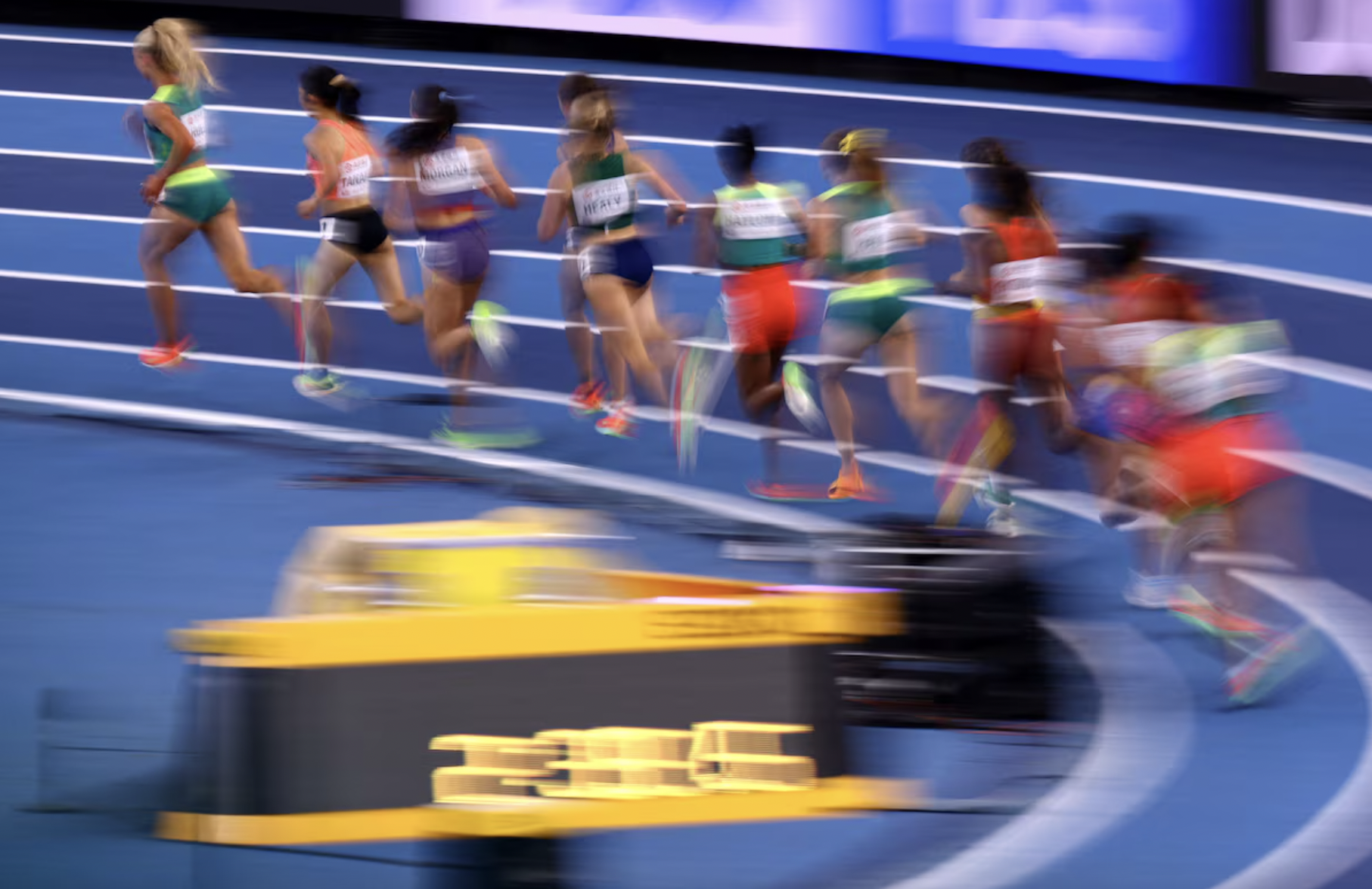 |
Athletes compete in the women's 3,000m final at the World Athletics Indoor Championships at Nanjing Youth Olympic Sports Park, China on 22/3/2025. Photo: Reuters |
Athletes compete in the women's 3,000m final at the World Athletics Indoor Championships at Nanjing Youth Olympic Sports Park, China on 22/3/2025. Photo: Reuters
WA believes SRY testing is currently the most advanced and constantly improving method. Their research suggests "testosterone suppression in both DSD and transgender groups can only partially mitigate the overall male advantage in athletics." They conclude that significant performance gaps between these groups and females exist before puberty.
Professor Williams disagrees. "There's almost no direct evidence pointing to a performance advantage for a person with DSD, and it can vary considerably between types of DSD," he said.
While acknowledging the test's acceptance in areas like criminal investigations and healthcare, he calls its application to athletes "appalling."
"The testing isn't entirely voluntary. It's a requirement for eligibility. It's not for the benefit of the person being tested," Williams said. "The impact on individuals is immense, requiring truly justifiable reasons, outweighing potential life-altering consequences."
Humans of Sport notes that speculation surrounding athletes' test results is often publicized. "We’ve witnessed numerous cases of athletes harmed by ‘sudden exposure’ and subsequent scrutiny," said Executive Director Payoshni Mitra. "The current regulations focusing on SRY heighten the pressure on athletes."
Mitra adds that most “exposures” occur before major events like World Championships or Olympics, where media scrutiny intensifies. Furthermore, awareness of DSD varies globally, impacting athletes in less developed regions like Africa, South Asia, and Southeast Asia more profoundly.
"In these countries, athletes lack support systems to understand what’s happening," Mitra said. "They suffer more harm and scrutiny, with less protection, especially those considered members of the LGBTIQ community."
| WA outlines three exceptions for individuals with DSD. : Biological males who haven't experienced male puberty are eligible to compete in the female category. However, WA offers no guidance on defining "male sexual development" or "male puberty." : Secondly, some female athletes deemed by WA to have DSD and XY chromosomes, complying with previous regulations and participating in past competitions, remain eligible for scored events if they maintain testosterone levels below 2.5 nmol/L and cooperate with WA's monitoring. : Thirdly, athletes with DSD but not complete androgen insensitivity syndrome (AIS) who haven't competed or met prior WA eligibility criteria are excluded from scored female events, effectively ending some emerging DSD athletes’ professional careers pending WA’s decision. : AIS is a rare genetic condition where individuals with XY chromosomes have little or no response to androgens, leading to female or mixed genitalia development despite having testes. : |
Trung Thu (adapted from CNN)





